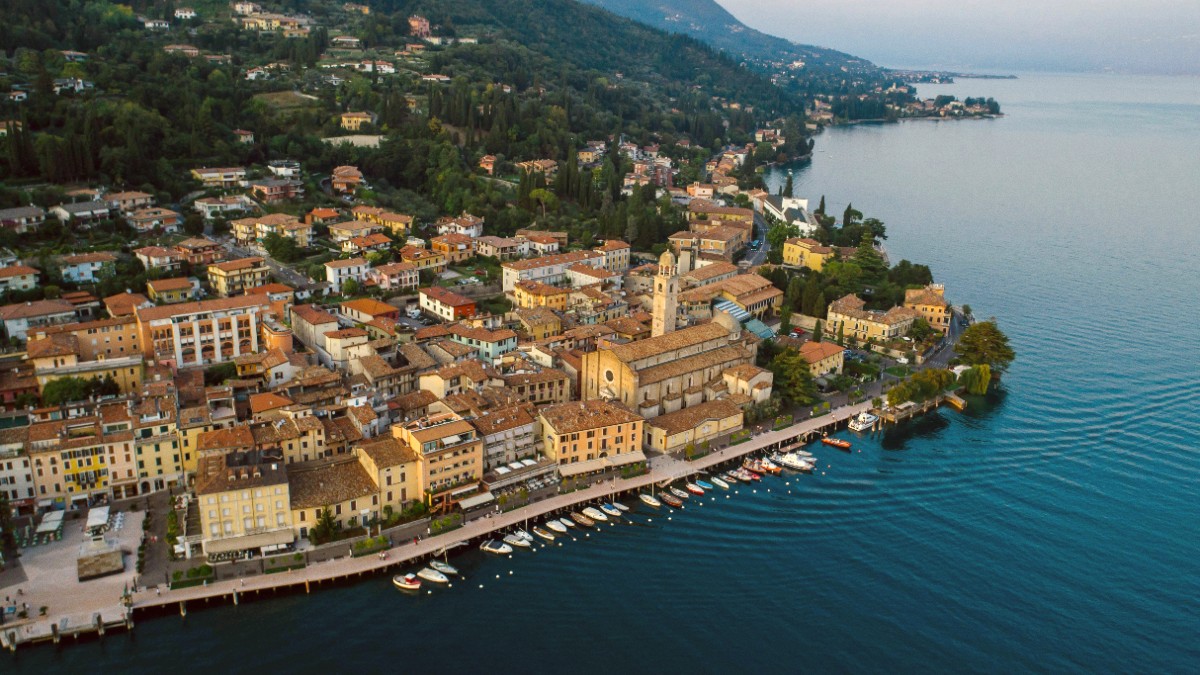
Lombardy And The Lakes, Italy
The Lombardy portion of Lake Garda encompasses numerous towns, including Sirmione, Desenzano del Garda, Salò, Gardone Riviera, and Limone sul Garda. This western and southwestern stretch presents varied scenery, from the flat, fertile plains of the southern end to the more dramatic, cliff-edged landscapes as one travels north towards Limone. The lake extends approximately 51.6 kilometers (about 32 miles) and measures 17.2 kilometers (about 10.7 miles) across at its widest point.
The geology of the region shapes Lake Garda. It is a glacial lake, carved out by ancient glaciers that descended from the Alps. The retreating ice left behind a deep basin, which filled with meltwater, forming the lake.
This glacial origin explains the lake's depth and its distinctive elongated shape. The surrounding mountains, including the eastern flanks of Monte Baldo and the western Lombard Prealps, contribute to the lake's unique climate, shielding it from colder northern winds and creating a localized microclimate.
Lake Garda’s history is rich and varied, a testament to its long-standing appeal and strategic position. Earliest evidence of human presence dates back to prehistoric times. The Roman Empire recognized Lake Garda's value; ancient villas, like the grand Grotte di Catullo in Sirmione, are reminders of this period. These ruins highlight the lake's status as a favored retreat for Roman aristocrats and poets.
Following the collapse of the Roman Empire, Lake Garda became a contested territory during the medieval period. Various noble families and city-states vied for control. The Scaliger family of Verona constructed impressive castles and fortifications, many still preserved today. During the Renaissance, Venice and Milan controlled the region, with Venetian influence distinguished in towns like Peschiera del Garda, an UNESCO World Heritage site.
Early human settlements; pile-dwelling villages found.
Favored retreat for aristocrats; Grotte di Catullo.
Contested territory; Scaliger family built castles.
Venetian control; growing artistic appreciation.
World Wars, Salò Republic; later, a major tourist destination.
The 20th century brought both peace and conflict to Lake Garda. Its northern end witnessed skirmishes during World War I. Later, during World War II, Salò served as the de facto capital of the Italian Social Republic from 1943 to 1945, a period with a complex legacy. Museums and memorials in Salò and surrounding areas cover this history.
Following the wars, Lake Garda rapidly grew as a major tourist destination, leveraging its natural beauty and historical appeal. Infrastructure improved, and towns adapted to welcome increasing numbers of visitors.
The long history of Lake Garda, from ancient settlements to modern tourism, provides layers of interest for any traveler. The blend of natural beauty with centuries of human history creates a captivating environment.
A short drive or boat ride transports visitors from bustling resort towns to quiet, secluded coves or elevated mountain trails, each featuring a distinct perspective on the lake’s natural splendor.
Lago di Garda today is a highly popular destination, welcoming millions of visitors each year from across the globe. The lake caters to a wide spectrum of travelers, for families, active individuals, cultural enthusiasts, and those simply seeking relaxation.
Visitors discover a landscape that transitions dramatically from the flat, fertile southern plains, home to family-friendly resorts and theme parks, to the rugged, mountainous northern shores, ideal for adventure sports. The western Lombardy side, with towns like Salò and Gardone Riviera, features a refined atmosphere.
Swimming, sailing, windsurfing, kitesurfing, and paddleboarding are popular, especially in the consistent winds of the northern lake.
Hiking and cycling trails wind through the surrounding hills and mountains, delivering views and challenges for all skill levels.
Local produce, including prized Garda DOP olive oil, fine wines, citrus fruits, and fresh lake fish form a delicious cuisine.
For families, the southern end features popular theme parks like Gardaland and Movieland. The region's culinary scene is a significant draw.